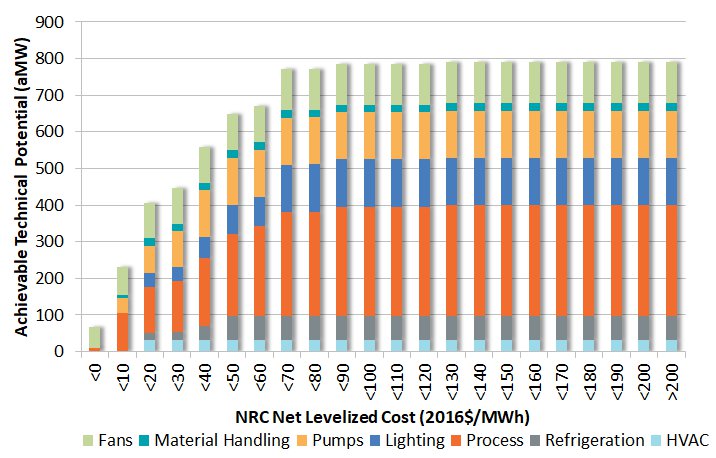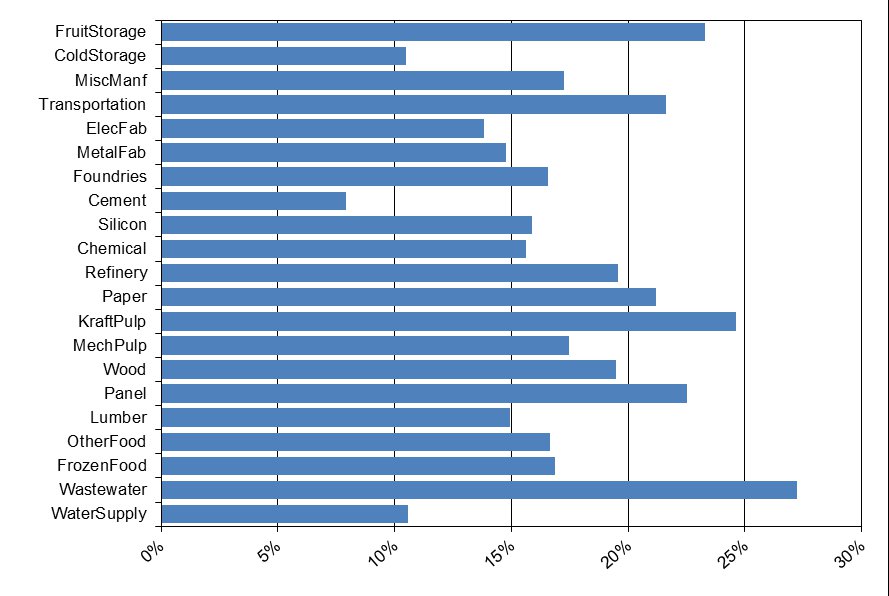The industrial sector in the Northwest comprises approximately 18,000 facilities in 21 individual segments including industries such as pulp and paper mills, fruit storage warehouses, refineries, and silicon chip manufacturing plants.
The industrial sector energy efficiency potential is a direct function of individual industrial segment loads and end-uses. The industrial consumption is forecasted to be approximately 42,340 gigawatt-hours (4,833 average megawatts) at the start of the planning period and declining to about 38,000 gigawatt-hours, or about 4,340 average megawatts by 2041 (medium forecast). Each of the industrial segments (industries) has a unique composition of end-use loads. Energy efficiency measures in the industrial sector are defined as a percent savings of these end-use loads.
The resulting achievable technical conservation potential is about 790 average megawatts, with 647 average megawatts of that potential available at a cost of less than $50 per megawatt-hour. The total savings potential represents approximately 18 percent of the projected 2041 industrial sector load. The industrial energy efficiency potential translates to around 940 megawatts of winter peak impact and 998 megawatts of summer peak impact The Council’s conservation assessment does not include savings potential for the Direct Service Industrial (DSI) customers of Bonneville.
The industrial potential is dominated by the general category of “process” as illustrated in the figure below. The “process” category includes Strategic Energy Management, compressed air improvements, material processing, and other motor efficiency improvements. Specific measures categories of fans and pumps are significant in the industrial sector potential. Other contributing end-uses include refrigeration, lighting, HVAC, and material handling. Most of the industrial conservation potential costs less than $100 per megawatt-hour.
Industrial Potential by End-use and Levelized Cost by 2041

Another way to look at the industrial sector conservation potential is by industry segment as shown in the figure below. The figure shows the share of potential relative to that segment’s total electricity consumption, which ranges from around 10% in the cement segment to over 26% in the wastewater treatment segment.
Industrial Sector Share of Savings Potential by Industry Segment by 2041
(savings as a percent of segment load)

Most industrial conservation measures are complex and require considerable design and careful implementation. Many measures and practices need continuing management and operational attention to ensure continued savings. Support from the plant’s employees, owners, and management is also critical. Implementation strategies will need to continue to take these factors into consideration in order to achieve the industrial conservation potential.



